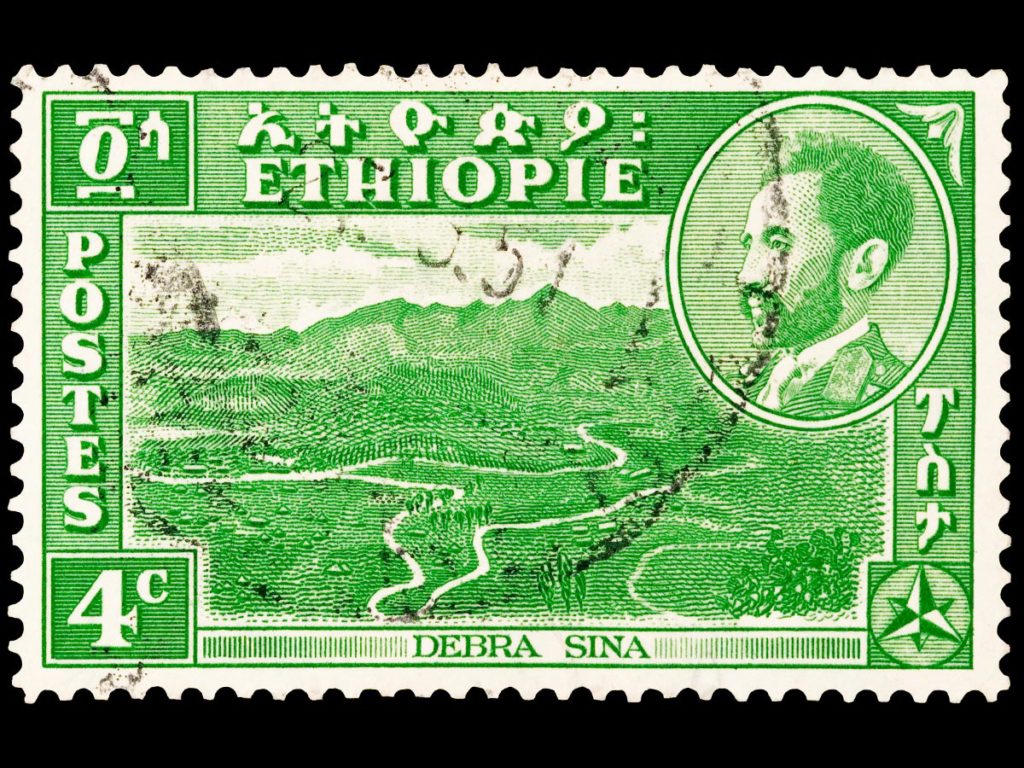Ethiopia has the longest history of independence in Africa, and consequently has one of the most stable stamp histories as well. Formerly called Abyssinia (which in fact refers to specific parts of modern-day Ethiopia), the first Ethiopian stamps were issued in 1895, inscribed in the Ge’ez script ‘Ethiopia’. Soon, the stamps also included the French name for the country, Éthiopie — though without the accent on the É.
For five years, between 1936 and 1941, Ethiopia was colonized by Italy, and was part of Italian East Africa. During this time, the Italians issued stamps for Ethiopia with the country’s name in Italian — Etiopia — as well as ‘Poste Coloniali Italiane’.
In 1941, Britain helped re-establish sovereignty to Ethiopia and stamp issues by the Ethiopian government continued again. In 1951, Haile Selassie, the legendary Ethiopian emperor, created a federation with Eritrea. Stamps were issued to honor this event, which ended in 1961 when Selassie dissolved the federation and declared Eritrea a province of Ethiopia. Eritreans were dismayed at this and it took thirty years for them to regain their independence.










